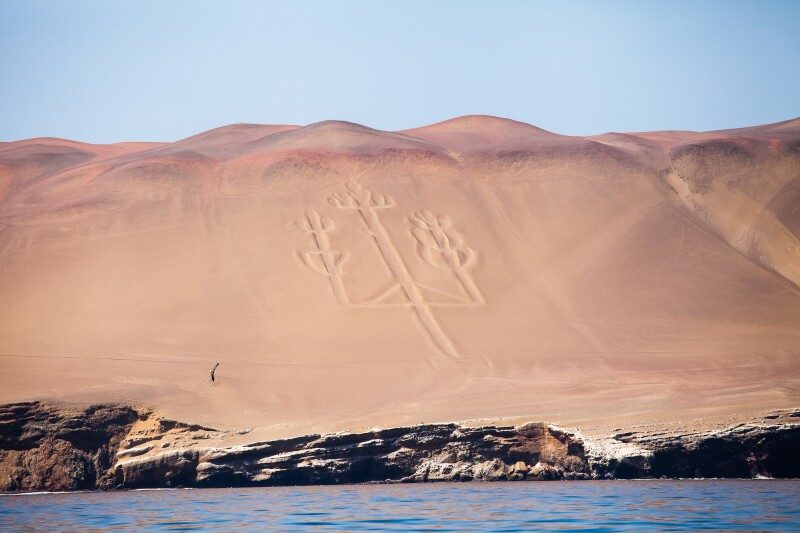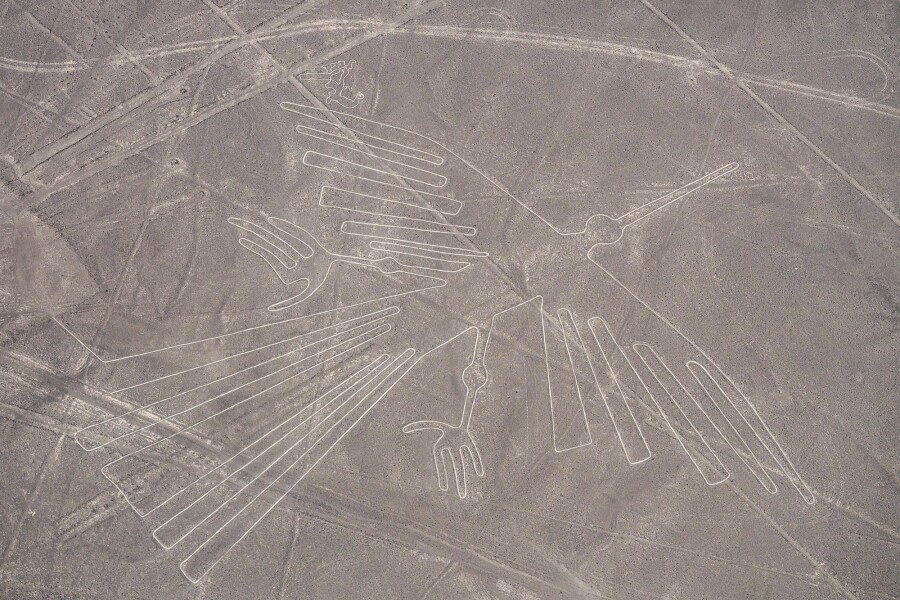A series of ancient markings spread out over a nearly 200-square-mile stretch of Peru’s coastal desert have mystified scientists since they were first discovered by a Peruvian archaeologist in 1927. Researchers believe that the unique desert etchings known as the Nazca Lines were created between 500 B.C.E. and 500 C.E. by members of the Nazca culture, a pre-Inca civilization in Peru. Beyond that, however, not much is certain about the origins or purpose of these carvings. In fact, UNESCO refers to the geoglyphs as “among archaeology’s greatest enigmas” in the site’s 1994 World Heritage site inscription.
Now, more than 100 previously unseen Nazca Lines have been identified by Japanese researchers in the Nazca Pampa region, adding to nearly a century of ongoing intrigue about the ancient desert carvings. On November 15, a group of archaeologists from Japan’s Yamagata University announced the discovery of 143 new Nazca Lines, an achievement the team had been working toward since 2004. Led by professor Masato Sakai, the group of archaeologists used on-the-ground field studies and satellite imagery to discover 142 of the new Nazca Lines, which the researchers say depict human and animal figures as well as geometric shapes. The team also taught an IBM artificial intelligence system to detect hard-to-trace figures, which in one case led to the first-ever Nazca Line identified by artificial intelligence: a humanoid figure that the Yamagata University team says “resembles a contemporary cartoon character or mascot.”
In addition to depicting human forms, the researchers say that the newfound carvings—which range from 16 feet to 330 feet in length—also represent a variety of animals, including birds, fish, snakes, and camelids, a group of mammals that includes llamas and alpacas. The Yamagata University archaeologists explain that human and animal-like carvings were likely used by Nazca civilizations as wayposts or travel markers, as those figures were typically found close to paths or slopes in the region. Geometric shapes, they believe, might signify locations where Nazca ceremonies were held. The 143 glyphs are thought to date back to a period between 100 B.C.E. and 300 C.E. They add to the more than 1,000 ancient designs already discovered in the Nazca and Palpa regions of southern Peru.

Ancient geoglyphs created by members of the Nazca civilization can be seen along a stretch of coastal desert in southern Peru that includes the Paracas National Reserve.
Photo by Stefano Buttafoco / Shutterstock
Archaeologists say that Nazca civilizations crafted the etchings by removing dark stones from the ground, thereby exposing the arid region’s contrasting sand beneath. Because of this, the Nazca Lines are highly susceptible to damage by natural causes such as weathering, as well as human-caused disruptions like industrial development and urban expansion. The Japanese researchers say that their goal is to gain a better understanding of the Nazca Lines so that urgent work can be done to protect them. “By gaining a detailed understanding on where the figures are located and when they were used,” the press release states, “researchers aim to attain a closer look into the worldview of the people who made and used these geoglyphs.”
The Nazca Lines are best seen from above—in fact, many are nearly impossible to discern from ground level, which is why the carvings can be difficult to uncover. Luckily, many operators in the region offer flights above the geoglyphs, such as the aptly named Nazca Lines Tours, which includes an itinerary that passes above the world-famous Nazca Lines in addition to some of the more recently discovered markings in Palpa. Trust us, you definitely don’t have to understand what the ancient carvings mean to be wowed by their appearance.
>>Next: Plan Your Trip With AFAR’s Guide to Peru








